
She shared a few stories about the paranormal and some of her upcoming events.
http://www.news4jax.com/news/historic-haunts/29427390
 If you missed it this morning, Jamie Pearce was on Local News 4's Morning Show earlier this morning. She shared a few stories about the paranormal and some of her upcoming events. http://www.news4jax.com/news/historic-haunts/29427390 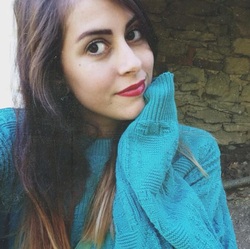 Ellen was born and raised on the beaches of North Carolina. Currently a baker at Walt Disney World in Orlando, Florida. While baking bread and decorating cakes is her passion, she loves to indulge in the skeptics side of paranormal universe. Gathering evidence and helping people, while exploring the possibility of lingering spirits is what made her a part of the historic haunts team. 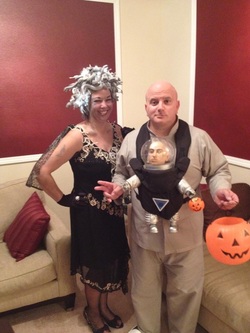 Team Members Eric & Jolyn O'Dierno Team Members Eric & Jolyn O'Dierno The practice of wearing costumes on Halloween may have originated in the Celtic festival of Samhain, which has ancient, pre-Christian origins and was celebrated on 31 October–1 November in various Celtic nations. It was seen as a liminal time, when the spirits or fairies (the Aos Sí), and the souls of the dead, could more easily come into our world. After the Christianization of Ireland in the 5th century, some of these customs may have been retained in the Christian observance of All Hallows' Eve in that region, and some continued to call the festival by the name of the ancient Celtic one, Samhain, blending the traditions of their ancestors with Christian ones. From at least the 16th century, the festival included mumming and guising, which involved people going house-to-house in costume (or in disguise), usually reciting verses or songs in exchange for food.[In 19th century Scotland, youths went house-to-house with masked, painted or blackened faces, often threatening to do mischief if they were not welcomed. In parts of Wales, men went about dressed as fearsome beings called gwrachod. In some places, young people dressed as the opposite gender. In parts of southern Ireland, a man dressed as a Láir Bhán (white mare) led youth’s house-to-house reciting verses in exchange for food. Elsewhere in Europe, mumming and costumes were part of other yearly festivals. However, in the Celtic-speaking regions they were "particularly appropriate to a night upon which supernatural beings were said to be abroad and could be imitated or warded off by human wanderers". It is suggested that the costumes were a means of imitating, or disguising oneself from, the Aos Sí. F. Marian McNeill suggests that the ancient pagan festival included people wearing masks or costumes to represent spirits, and that faces were marked with ashes taken from the sacred bonfire. It has also been suggested that the wearing of Halloween costumes developed from Christian customs created in Western Europe around the 15th century."Soaling", the custom of baking and sharing soul cakes for all christened souls, has been suggested as the origin of trick-or-treating, and "used to consist of parties of children, dressed up in fantastic costume, who went round to the farm houses and cottages, signing a song, and begging for cakes (spoken of as "Soal-cakes"), apples, money, or anything that the goodwives would give them; the practice was mentioned by Shakespeare his play The Two Gentlemen of Verona (1593). The custom of wearing costumes has been explicated by Prince Sorie Conteh, who wrote: "It was traditionally believed that the souls of the departed wandered the earth until All Saints' Day, and All Hallows' Eve provided one last chance for the dead to gain vengeance on their enemies before moving to the next world. In order to avoid being recognised by any soul that might be seeking such vengeance, people would don masks or costumes to disguise their identities". In medieval Christian celebrations of All Hallows' Eve, individuals paraded through the streets with statues and replicas of the martyred saints; some of the less wealthy churches could not afford these things and so they dressed like saints instead. Some believers continue the practice of dressing as saints, biblical figures, and reformers in Halloween celebrations today. Many Christians in continental Europe, especially in France, acknowledged "a belief that once a year, on Hallowe'en, the dead of the churchyards rose for one wild, hideous carnival," known as the danse macabre, which has been commonly depicted in church decoration, especially on the walls of cathedrals, monasteries, and cemeteries. This danse macabre, which was enacted by "Christian village children [who] celebrated the vigil of All Saints" in the 16th Century, has been suggested as the predecessor of modern day costume parties on this same day. The custom of guising at Halloween in North America is first recorded in 1911, where a newspaper in Kingston, Ontario reported children going "guising" around the neighborhood. In 19th century America, Halloween was often celebrated with costume parades and "licentious revelries”. However, efforts were made to "domesticate" the festival to conform with Victorian era morality. Halloween was made into a private rather than public holiday, celebrations involving liquor and sensuality de-emphasized, and only children were expected to celebrate the festival. Early Halloween costumes emphasized the and gothic nature of Halloween, and were aimed primarily at children. Costumes were also made at home or using items (such as make-up) which could be purchased and utilized to create a costume. But in the 1930s, A.S. Fishbach, Ben Cooper, Inc., and other firms began mass-producing Halloween costumes for sale in stores as trick-or-treating became popular in North America. Halloween costumes are often designed to imitate supernatural and scary beings. Costumes are traditionally those of monsters such as vampires, werewolves, zombies, ghosts, skeletons, witches, goblins, trolls, devils, etc. or in more recent years such science fiction-inspired characters as aliens and superheroes. There are also costumes of pop culture figures like presidents, athletes, celebrities, or characters in film, television, literature, etc. Another popular trend is for women (and in some cases, men) to use Halloween as an excuse to wear sexy or revealing costumes, showing off more skin than would be socially acceptable otherwise. Young girls also often dress as entirely non-scary characters at Halloween, including princesses, fairies, angels, farm animals and flowers. Halloween costume parties generally take place on or around October 31, often on the Friday or Saturday prior to the holiday. **Credit to www.Wikipedia.org** I know this isn’t a ghost story but UFO’s are part of the paranormal field. Paranormal means anything outside of the normal.
My first sighting which made me more interested in UFOs and other things of the unknown was when I was about 6 or 7 years old. My mom and I just came out of the grocery store in St. Pete when I looked up and saw a saucer shaped object in the sky. I told my mom to look as I pointed up at it. It wasn’t quite close enough to make out major details but we saw a saucer shaped object above and it looked like round windows on the dome part of the object. I remember another couple walking towards the store seeing it as well and commenting on it then a few other people stopping in the Publix parking lot when they saw us looking up. I would say there were ten of us in the parking lot that saw it that day. It quickly vanished out of sight with no trace. Ever since then, I have been curious about UFOs and USOs. It was my first experience, but not my last! ~Jamie Pearce Founder Historic Haunts Investigations 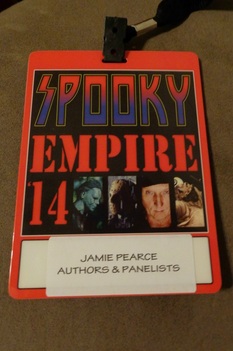 Where does everyone go in October near the Orlando area? To Spooky Empire of course. A fantastic and spooktacular convention held every year revolving around the horror world. Jamie Pearce, found of Historic Haunts Investigations and author of the Historic Haunts series, has been involved with Spooky Empire for the last two years and loves chatting about the paranormal with the horror world. 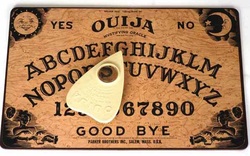 First of all, Historic Haunts Investigations does NOT use Ouija Boards and we do not believe you need them for contacting the spirit world. If they want to be contacted we believe they will contact us. This is just our belief and everyone has the right belief whatever they wish. ~Jamie Pearce The Ouija board also known as a spirit board or talking board, is a flat board marked with the letters of the alphabet, the numbers 0–9, the words "yes", "no", "hello" (occasionally), and "goodbye", along with various symbols and graphics. It uses a planchette (small heart-shaped piece of wood) or movable indicator to indicate the spirit's message by spelling it out on the board during a séance. Participants place their fingers on the planchette, and it is moved about the board to spell out words. "Ouija" has become a trademark that is often used generically to refer to any talking board. Following its commercial introduction by businessman Elijah Bond on July 1, 1890, the Ouija board was regarded as a harmless parlor game unrelated to the occult until American Spiritualist Pearl Curran popularized its use as a divining tool during World War I. Mainstream religions and some occultists have associated use of an Ouija board with the concept of demonic possession, and view the use of the board as a spiritual threat and have cautioned their followers not to use an Ouija board. One of the first mentions of the automatic writing method used in the Ouija board is found in China around 1100 AD, in historical documents of the Song Dynasty. The method was known as Fuji, "planchette writing". The use of planchette writing as an ostensible means of contacting the dead and the spirit-world continued, and, albeit under special rituals and supervisions, was a central practice of the Quanzhen School, until it was forbidden by the Qing Dynasty. *Obtained from Wikipedia.org*  John Zaffis w/Jamie Pearce 2010 John Zaffis w/Jamie Pearce 2010 John Zaffis is a paranormal researcher, a demonologist, and the nephew of Ed and Lorraine Warren. Zaffis has had over 40 plus years in the paranormal field and has also been a lecturer on the field and is an author as well. Most recently Zaffis had a fantastic show on SyFy called, Haunted Collector which was one of my favorites and focused on items that were haunted or had spirit attachments. I was blessed to have the opportunity to learn from him in 2010 while he was in St. Augustine for an event. It was truly an honor to pick his brain of years of knowledge and for him to actually listen to my opinions as well. I hope to get the opportunity to meet and work with him again. He is truly a legend in the paranormal field. ~Jamie Pearce Author/Founder of Historic Haunts Investigations 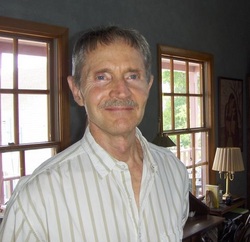 I have had the opportunity to work with Dr. Harry Stafford PhD numerous times and have learned many things from him. Dr. Stafford has taught parapsychology from time to time, has a doctorate degree in Human Consciousness Studies from Florida State University and a Masters of Divinity from Harvard. While Dr. Stafford ran his tour Haunted St. Augustine, I worked with him side by side for quite some time and really enjoyed his knowledge on the field and even had the opportunity to work with him on a few paranormal investigations. ~Jamie Pearce Founder of Historic Haunts Investigations 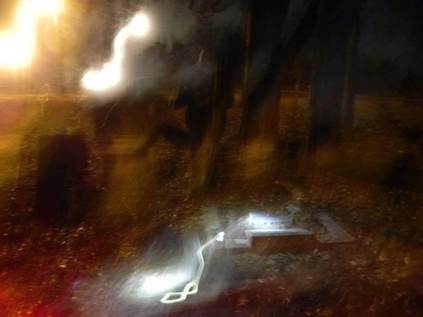 1st Place Mike Sharbeno 1st Place Mike Sharbeno We had a lot of great entries again this year and had a hard time deciding but the Historic Haunts Investigations team came up with the top three photos. We did have two contest this year, one early on in the year and now this one to get the contest back on track with the Halloween season. Thank you so much everyone for sending in your photos and to my team for their votes. We are looking forward to our 9th Annual Ghostly Photo Contest in 2015. Happy Hauntings everyone! 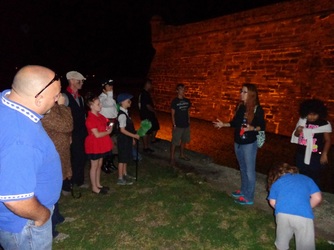 Yet again, we had an amazing group on our annual home school ghost tour! One family went all our and dresses as characters from the movie Mary Poppins. It was a beautiful evening and we even had dolphins and a sting ray in the bay early on during the tour. Thank you again for joining me for a spooktacular night and I look forward tot he next one. ~Jamie Pearce Author/Founder of Historic Haunts |
Jamie PearceFounder of Archives
April 2025
|